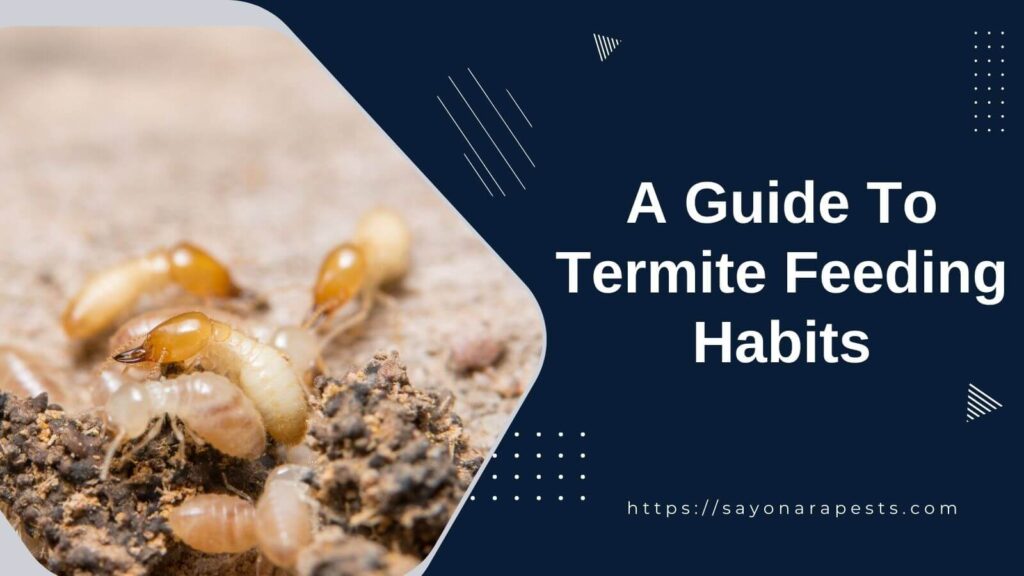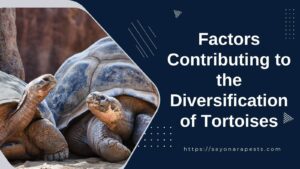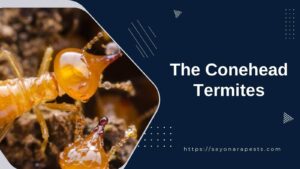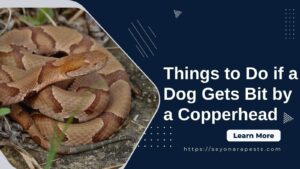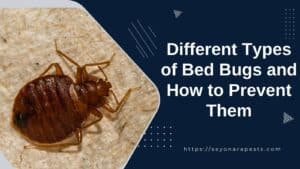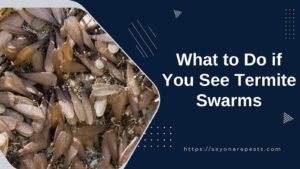The termite is a small insect that lives in groups. It is well known for doing a lot of damage to wooden buildings.
Homeowners, people who work in pest control, and anyone else who wants to protect their property needs to know what termites feed on.
This detailed guide goes deep into the complicated world of termite feeding, giving easy-to-understand information about what termites feed on, how they find food, and what their eating habits could mean for the future.
By explaining how termites eat, this guide aims to give readers the information they need to stop termite infestations and protect their homes from these destructive pests.
Wood-Feeding Termites
Wood-feeding termites are known for their ability to eat, digest and break down cellulose, which is found in wood, and convert it into usable nutrients.
This is made possible by the presence of specialized microorganisms in their digestive system that help break down the tough cellulose fibers. As a result, wood-feeding termites play a crucial role in the decomposition of plant matter and the recycling of nutrients in the ecosystem.
Types of Wood-Feeding Termites
Subterranean Termite
One of the most common types of wood-feeding termites is the subterranean termite. As the name suggests, these termites live underground and create their nests in soil or moist wood. They are highly destructive and can cause significant damage to wooden structures and furniture.
These termites are typically light brown or black in color and range in size from ¼ to ½ inch in length. They are social insects that live in large colonies and are organized into castes based on their roles within the colony.
The worker termites are responsible for gathering food and building tunnels, while the soldiers defend the colony from predators and other threats.
One of the most distinctive characteristics of these termites is their use of mud tubes. These tubes provide a protected path for the termites to travel from their underground nest to their food source.
The tubes are made from a mixture of soil, wood particles, and saliva and can often be found running along the surface of walls or other wooden structures.
Furthermore, these termites are found throughout the United States and are particularly prevalent in the southern states where the climate is warm and humid. They are also found in many other parts of the world, including South America, Africa, and Asia.
In order to prevent damage from these termites, it is important to take steps to protect wooden structures and furniture. This can include regular inspections for signs of termite activity, treatment with termite-resistant chemicals, and the installation of physical barriers such as metal mesh or concrete foundations.
By taking these precautions, it is possible to protect wooden structures and prevent costly damage from these destructive pests.
Drywood Termites
One of the most common types of wood-feeding termites is the drywood termite. As the name suggests, these termites live in drywood and do not require contact with soil to survive.
They are found in warm and humid regions around the world, and in the United States, they are most commonly found in the southern states.
Drywood Termites are often difficult to detect because they live inside the wood and do not build mud tubes or other visible structures. They feed on the wood from the inside out, and the damage they cause can be extensive.
Signs of a drywood termite infestation include piles of frass (termite droppings), small holes in the wood, and hollow-sounding wood.
There are several ways to control drywood termite infestations, including fumigation, heat treatment, and localized treatments. Fumigation involves sealing the structure and introducing a gas that kills the termites.
Heat treatment involves raising the temperature inside the structure to a level that kills the termites. Localized treatments involve applying insecticides directly to the affected wood.
Detection and control of drywood termite infestations can be difficult, but with proper management and treatment, it is possible to protect structures from these destructive pests.
Dampwood Termites
Dampwood termites are so-called because they typically inhabit wood that is damp or moist. They are typically found in forests, where they feed on dead and decaying trees, as well as in homes and other buildings that have moisture problems.
Unlike other types of termites, these termites do not need to maintain contact with the soil to survive. Instead, they can live entirely within the wood they are feeding on, which makes them a particular concern for homeowners.
One of the reasons why dampwood termites are such a significant threat is that they can cause significant damage to wooden structures in a relatively short period. This is because they have large mandibles that enable them to break down wood quickly and efficiently.
They also have the ability to produce large quantities of frass, which is the term used to describe the excrement of wood-feeding insects. This frass can accumulate inside walls and other structures, leading to further damage and potentially creating health hazards for the occupants of the building.
In addition to their destructive potential, these termites are also fascinating creatures from a biological standpoint. They have complex social systems, with a queen and a large number of workers and soldiers.
These insects communicate with each other using a variety of chemical signals, including pheromones, which help them to coordinate their activities and defend their colonies against predators and other threats.
Moreover, these termites also have a unique ability to digest cellulose, which is the primary component of wood, thanks to the presence of microorganisms in their gut.
These termites are a fascinating and potentially destructive species of wood-feeding termites. Their ability to feed on moist wood and their lack of dependence on soil make them a significant concern for homeowners and other property owners.
Conehead Termites
Scientists call conehead termites Nasutitermes corniger. They are a type of wood-eating termite that belongs to the family Termitidae. Their name comes from the distinctive cone-shaped head of the soldier caste.
These termites are from the Caribbean and were accidentally brought to southern Florida in the early 2000s. These insects are very destructive and can cause a lot of damage to wooden structures.
The colonies of these termites are usually very large and aggressive. Mature colonies can have millions of individuals.
They build nests above the ground that often look like large mounds and can live in trees, utility poles, and even buildings. Conehead termites, unlike subterranean termites, don’t build mud tubes. Instead, they make complicated tunnels out of bits of chewed wood and saliva, which they use to get to food and get around.
Arboreal Termites
Arboreal termites, also called tree-dwelling termites, are a fascinating group of termites that only live in trees and feed on wood. They are in the family Termitidae and live all over the world in tropical and subtropical places.
Tree-dwelling termites don’t build mounds or nests as conehead termites do. Instead, they make their nests right inside the trees they live in.
Because they live in trees, arboreal termites have made special changes to their bodies. They use the tree’s wood as their main food source and build complex networks of tunnels and galleries inside it.
The flagellate protozoa and bacteria in these termites’ guts work together to help them digest cellulose, which is the main part of the wood.
There are both good and bad things that can happen when arboreal termites live in trees. On the plus side, they are very important for nutrient cycling and decomposition.
They break down dead wood and bring nutrients back into the ecosystem. But when arboreal termites attack cultivated trees or wood plantations, they can hurt the economy.
How Does Wood-Feeding Termite Consume Wood?
Digestion Process of Wood-Feeding Termites
Wood-feeding termites have evolved a unique digestive system that enables them to feed on and break down the complex carbohydrates found in wood.
The process begins with the termites feeding on small pieces of wood that are then carried to the hindgut, where they are broken down by microbial symbionts.
These symbionts are essential for the termite’s ability to digest wood, as they produce enzymes that break down the cellulose and hemicellulose fibers found in wood.
The digestion process is facilitated by a series of compartments within the termite’s hindgut. The first compartment, known as the paunch or crop, acts as a storage chamber for the wood and provides an environment for the symbiotic microbes to colonize.
As the wood is broken down, it moves through the various compartments, each with a unique set of microbial symbionts and enzyme production capabilities.
Once the wood fibers have been broken down into their constituent sugars, they are absorbed by the termite’s gut epithelium and transported to other parts of the body for energy production.
Interestingly, termites are able to extract up to 80% of the energy stored in wood, which is significantly more than other wood-feeding animals such as cows and horses.
The ability of termites to digest wood has important ecological implications. They play a critical role in the breakdown of dead wood, which contributes to nutrient cycling and soil health.
Additionally, termites have been found to contribute significantly to carbon sequestration in tropical forests, as they break down and store large amounts of carbon in their nests.
The digestion process of wood-feeding termites is a fascinating example of the intricate relationship between animals and their microbial symbionts.
Through a complex series of enzymatic reactions and transport processes, termites are able to efficiently extract energy from wood and play a vital role in maintaining healthy forest ecosystems.
Wood Preferences
Termites have specific preferences when it comes to the type of wood they would likely feed on. They are attracted to wood that is damp and has high cellulose content. Softwoods like pine and spruce are their favorite, as they contain more cellulose than hardwoods like oak and maple.
Termites prefer freshly cut or deadwood over aged wood, as the latter has already started to decay and has lower cellulose content.
Interestingly, termites can distinguish between different types of wood and even avoid wood treated with chemicals. These termites hate the presence of chemicals like arsenic, copper, and borate in the wood, which is commonly used as a wood preservative.
This ability to detect and avoid chemical-treated wood has implications for the control of termites in buildings and other structures.
In addition to their wood preferences, termites have developed unique adaptations that allow them to consume wood. Termites have a specialized digestive system that allows them to break down cellulose, the main component of wood.
They have a symbiotic relationship with microorganisms that live in their digestive system, which produce enzymes that help break down cellulose.
Termites also have a unique feeding behavior that allows them to consume wood efficiently. They feed on the softer, inner part of the wood, leaving the harder outer layer untouched.
This allows them to consume more wood in less time and with less effort.
Termites have specific preferences when it comes to the type of wood they consume. They prefer softwoods that are damp and have high cellulose content. They can also sense and avoid chemical-treated wood.
Termites have unique adaptations and feeding behaviors that allow them to efficiently consume wood, including a specialized digestive system and feeding on the softer, inner part of the wood.
Understanding how termites consume wood can help us better control and prevent termite damage in buildings and other structures.
Soil Feeding Termites
Soil-feeding termites are fascinating creatures that have evolved unique adaptations to efficiently feed on the soil as their primary source of food. These insects are commonly found in tropical and subtropical regions, where they play important roles in the ecology and nutrient cycling of soil ecosystems.
One of the defining characteristics of soil-feeding termites is their ability to break down complex organic compounds in the soil, such as lignin and cellulose, into simpler compounds that can be used for energy and growth.
This is achieved through the help of a diverse community of microorganisms that reside within the termite’s gut and work together to digest the soil.
Types of Soil-Feeding Termites
Subterranean Termites
Subterranean termites are also one of the most common types of soil-feeding termites. They are called subterranean because they live in underground colonies and build tunnels to access their food sources, which are typically located above ground.
These termites feed on dead wood and other plant materials that are in contact with the soil.
They can cause significant damage to wooden structures, which is why they are considered a pest.
Harvester Termites
Harvester termites, on the other hand, are a unique type of soil-feeding termites that have a specialized diet.
They feed on grasses and other plant materials that grow in the soil, and they are able to break down the tough cellulose fibers in these materials with the help of specialized microorganisms in their gut.
Unlike subterranean termites, harvester termites do not build tunnels or live in underground colonies. Instead, they build large mounds above ground, which can be several meters tall. The mounds are made up of a mixture of soil, plant materials, and termite excrement, and they are home to millions of termites.
How Does Soil-Feeding Termites Consume Soil?
Digestion Process of Soil-Feeding Termites
The digestion process of soil-feeding termites begins with the ingestion of soil particles. The termite’s mandibles, or jaws, are specialized for grinding and breaking down soil particles into smaller pieces.
Once the soil particles are broken down, they pass through the termite’s digestive system, which is composed of three distinct regions: the foregut, midgut, and hindgut. In the foregut, enzymes and symbiotic microorganisms begin to break down the complex organic compounds found in the soil.
The enzymes and microorganisms work together to break down the soil particles into simpler compounds, such as sugars and amino acids.
After passing through the foregut, the partially digested soil particles enter the midgut. Here, more enzymes and microorganisms continue the digestion process, breaking down the remaining organic matter.
The digested compounds are then absorbed into the termite’s body, providing the insect with the nutrients it needs to survive.
The hindgut is the final stage of the termite’s digestive process. Here, the remaining undigested soil particles are separated from the waste products and expelled from the termite’s body.
The waste products, which consist primarily of nitrogenous compounds, are recycled by the termite’s symbiotic microorganisms and used to synthesize amino acids and other essential compounds.
The digestion process of soil-feeding termites is a complex and highly efficient process that enables these insects to survive on a diet of soil.
The termite’s symbiotic relationship with microorganisms is critical to its ability to extract nutrients from the soil, and the digestive process is carefully orchestrated to ensure that the insect can extract as many nutrients as possible from the soil it consumes.
Soil Preferences
The first step in understanding how soil-feeding termites consume soil is to examine their soil preference.
These insects typically prefer feeding on soil that is rich in nutrients and organic matter. This preference is not surprising since soil that is high in nutrients provides a better food source for termites, allowing them to grow and reproduce more efficiently.
Furthermore, termites are known to prefer soil that is moist and has a loose texture. This preference is due to the fact that soil that is too compact and dry is difficult for termites to break down and consume.
Once termites have located soil that meets their preferences, they begin to consume it. Unlike other insects that feed on plant material, termites are not equipped to break down tough cellulose fibers. Instead, they rely on a complex system of enzymes and microorganisms that reside in their gut to break down the soil particles.
These microorganisms are essential to the digestion process since they produce enzymes that are capable of breaking down the complex molecules found in soil.
As termites consume soil, they also mix it with saliva and other digestive secretions to form a paste-like substance. This substance is then passed through the termite’s gut, where it is further broken down and digested.
The resulting waste material is expelled from the termite’s body in the form of feces, which is commonly known as “termite castings.”
These castings are an essential component of soil health since they contain high levels of nutrients and organic matter that are vital for plant growth.
Plant-Feeding Termites
Plant-eating termites are important to ecosystems because they break down and recycle plant matter. These interesting insects have developed special ways to feed on leaves, grass, and other plant materials that are high in cellulose.
A diverse group of microorganisms that live in their guts help them break down complex plant fibers.
Desert Termites
Desert termites, which are also called psammophilous termites, are a special type of termite that has adapted to living in dry, desert areas. They are part of different termite families, such as Termitidae and Rhinotermitidae, and live in deserts all over the world.
These termites have developed behaviors and body changes that help them live in harsh desert conditions where there isn’t much water. Desert termites primarily feed on decomposing plant material such as dead grasses, legumes, and other plants available in their habitats.
Desert termites often build complicated underground nests or mud tubes to keep themselves safe from the heat and from being eaten by other animals.
These structures help control the humidity and temperature inside the nest, making it a good place for the termite colony.
Desert termites also have ways to save water, like making their exoskeletons less porous so they lose less water and recycling water from their waste.
Even though they live in hard places, desert termites are very important to the ecosystems of deserts. By breaking down plant matter and adding organic matter to the soil, they help the cycle of nutrients and the formation of soil.
Desert termites are also food for other animals that live in the desert, such as reptiles and birds.
Fungus-Feeding Termites
Macrotermites, which are termites that eat fungi, have developed a unique and interesting relationship with fungi. Other termites use microorganisms in their guts to break down plant matter.
Fungus-feeding termites, on the other hand, have developed a sophisticated system for growing fungi in their nests. These termites grow certain kinds of fungi, which are their main food source.
Fungus-Growing Termites (Macrotermitinae)
Macrotermitinae is the scientific name for a subfamily of termites that have a unique relationship with fungi that benefits both of them.
You can find these termites in tropical and subtropical areas, especially in Africa, Asia, and Australia. They are very good at growing certain kinds of fungi in their colonies, which they are more likely to feed on.
The relationship between these termites and fungi is a complicated and sophisticated process. The termites give the fungi a controlled place to grow, and the fungi give the termites a source of food that is high in nutrients.
The termites grow the fungi in special chambers inside their nests. In these chambers, they make sure the temperature, humidity, and airflow are just right.
Termites that grow fungi belong to a group called basidiomycetes, and the fungi they grow are usually from the genera Termitomyces and Macrotermes. These fungi aren’t like the ones you’d find in nature, and they’ve changed along with the termites.
The termites get all the food they need from the fungal gardens, and they even have their own ways to protect their fungal gardens from pests and diseases.
Factors Affecting Termite Feeding Habits
Environmental Factors
Temperature
The feeding habits of termites are heavily influenced by a variety of environmental factors, including temperature, humidity, and soil type. Temperature plays a critical role in termite feeding behavior as these insects are ectothermic, meaning that their body temperature is regulated by the environment around them.
Termites thrive in warm and moist conditions, with an optimal temperature range between 25 to 38 degrees Celsius. Outside of this range, their feeding habits can be significantly impacted, and in extreme cases, can lead to death.
For example, in colder temperatures, termites may become sluggish and have difficulty digesting wood, while in hotter temperatures, they may consume more wood to maintain their metabolic rate, leading to faster depletion of resources.
Humidity
Humidity is another crucial factor that affects termite feeding habits. Termites require a high level of moisture to survive, and a lack of humidity can cause them to dehydrate and die. Conversely, an excessive amount of humidity can create an ideal breeding ground for fungi and bacteria, which can also impact termite feeding.
Moreover, humidity can also affect soil moisture content, which is essential for the structural stability of termite mounds and tunnels. In drier soil, termites may be forced to seek out new food sources, while in wetter soil, they may have easier access to their preferred food sources.
Soil Type
Soil type is also a significant environmental factor that affects termite feeding habits. Termites are highly adaptable insects that can thrive in a variety of soil types, but their feeding habits may differ based on the type of soil they inhabit.
For instance, sandy soil may not provide sufficient moisture for termites, leading them to seek out alternative sources of water. In contrast, clay soils tend to retain more moisture, which can create an ideal environment for termites.
Moreover, soil type can affect the nutrient composition of the soil, which can influence termite feeding habits. For example, nutrient-rich soils may provide an abundant food source for termites, whereas nutrient-poor soils may force them to seek out alternative food sources.
The feeding habits of termites are influenced by a range of environmental factors, including temperature, humidity, and soil type.
Each of these factors can impact termite behavior in different ways, highlighting the importance of understanding the specific environmental conditions in which termites reside.
By gaining a better understanding of how environmental factors affect termite feeding habits, researchers and pest management professionals can develop more effective strategies for managing termite infestations and reducing the damage they cause.
Chemical Factors
The eating patterns of termites may be influenced by a number of variables, including chemical elements such as those found in soil and wood.
Wood compounds, for instance, have the ability to impact the feeding behavior of termites by modifying the content and structure of the wood, increasing or decreasing the attractiveness of the material to insects.
Lignin and tannins are two examples of wood compounds that are known to discourage termite feeding, while cellulose, hemicellulose, and starch are examples of wood chemicals that termites find more enticing to consume.
Chemicals in the soil may also play a significant part in the feeding behavior of termites. Termites must have soil in order to construct their nests and receive moisture; also, the chemical makeup of the soil might have an effect on the way the termites consume food.
For instance, if there are poisonous substances present in the soil, termites may be dissuaded from feeding on it. On the other hand, if there aren’t enough necessary nutrients like nitrogen and phosphorus, their development and ability to survive may be stunted.
In addition, the interaction between wood and soil compounds might have an effect on the eating patterns of termites. For instance, some wood-degrading enzymes generated by termites may have their activity enhanced by certain soil compounds, resulting in the wood being more easily digested.
In a similar vein, some compounds found in wood have the ability to encourage the development and activity of soil microorganisms, which are responsible for the production of nutrients that are essential to the growth and survival of termites.
The eating patterns of termites may be significantly influenced by chemical components, such as the composition of the soil and wood.
When we have a better understanding of these elements, we will be better able to devise more effective ways for controlling termite populations and reducing the harm that termites may bring to ecosystems and buildings.
It is necessary to do more study in order to investigate the complicated connections that take place between these chemical components and the many physiological and behavioral systems that govern the feeding behavior of termites.
Structural Factors
When it comes to structural factors, the age of the structure and the kinds of construction materials that were used are the two primary characteristics that have the most impact on the feeding behaviors of termites.
When it comes to the degree to which termites are drawn to a particular structure, the age of the building might be a decisive factor.
Because the wood and other materials used in the construction of older buildings have had more time to deteriorate and become more accessible to termites, these structures are frequently more prone to termite infestations than newer buildings that have been standing for a shorter amount of time.
In addition, older structures may have had past termite infestations, which may have weakened the structure and made it easier for new colonies to take root. Termites may do significant damage to a building’s wood and wood products.
The kinds of construction materials that are used are yet another important structural aspect that affects the feeding behaviors of termites.
Termites are drawn to certain kinds of materials that contain a lot of cellulose, such as items made of wood and paper, for example. However, there are certain construction materials that termites find less appetizing, which might prevent them from feasting on the structure.
For instance, research has shown that some varieties of concrete and steel are less likely to be damaged by termites. As a result, these materials are a more viable option for use in buildings in regions with a high level of termite activity.
In general, it is vital to have a comprehensive grasp of the structural variables that impact the eating habits of termites in order to control termite infestations and avoid damage to structures.
Property owners can lessen the likelihood of termite infestations and better protect their investments over the long term by taking appropriate actions to reduce the attractiveness of their buildings to termites.
These actions may include the utilization of building materials that termites find less appealing or the performance of routine inspections and treatments on older buildings.
Impacts of Termite Feeding Habits on the Environment
Ecological Role of Termite Feeding Habits
Termites are known to play a critical role in the ecology of the environment, as they act as decomposers and help to recycle nutrients back into the ecosystem.
Termites are essential decomposers that help to break down dead plant matter and release nutrients back into the soil. This is a crucial aspect of the natural ecosystem as it helps to maintain a healthy balance between the various living organisms.
Termites also help to aerate the soil by digging tunnels, which allow air and water to penetrate deep into the ground. As a result, this creates a better-growing environment for plants and helps to improve soil quality.
In addition to their role in soil health, termites also help to prevent the accumulation of dead wood in the environment. Deadwood can be a potential fire hazard and can also provide a breeding ground for pests and diseases.
By consuming dead wood, termites help to prevent these issues and contribute to a safer environment. Termites also play a role in controlling greenhouse gas emissions by breaking down organic matter in the soil, which reduces the amount of carbon dioxide released into the atmosphere.
Furthermore, termites have been found to have a symbiotic relationship with other organisms in the environment. For example, some species of termites have a mutually beneficial relationship with fungi.
The termites provide the fungi with a suitable environment to grow, while the fungi provide the termites with essential nutrients. This relationship helps to improve soil quality and promotes the growth of plants in the area.
Overall, termites play a vital role in the ecology of the environment, and their feeding habits have a significant impact on the ecosystem.
Their ability to break down cellulose and recycle nutrients back into the soil makes them an essential part of the natural cycle of life. By understanding the ecological role of termites, we can appreciate the importance of these tiny creatures and work towards preserving their natural habitat.
Negative Impacts of Termite Infestations on the Environment
Damage to the Natural Habitat
There are many bad effects that termite infestations have, but one of the most important repercussions is the harm that it does to natural ecosystems.
Termite infestations may also cause structural damage to buildings. The capacity of termites to devour wood and other materials containing cellulose makes them a huge hazard to the natural environment.
Termites may be found in almost every part of the world. When termites infest a region, they devour enormous quantities of wood and plants, which results in the destruction of the environment for the local flora and fauna.
It is possible for termite infestations to have a particularly devastating effect on natural environments in regions where the flora and animals are highly reliant, for their survival, on wood and other plant materials.
Infestations with termites are capable of wreaking havoc not only on the plants themselves but also on the underlying structural components of the soil. The complex network of tunnels and galleries that termites create in the soil may compromise both the structure and the stability of the soil.
This may result in soil erosion, which in turn makes the area more susceptible to landslides and other natural catastrophes.
The disruption in the structure of the soil may also have a substantial effect on the nutrient cycle. This is because the soil’s capacity to sustain plant life might be affected by the damage.
In addition, the damage to natural ecosystems caused by termite infestations may have significant repercussions for the survival of the many species of animals that are dependent on those environments.
For instance, birds and animals that depend on the hollows of trees for breeding or refuge may lose their habitats as a consequence of termite infestations. Termites consume the cellulose that is found in the wood of trees.
Because the loss of habitat may lead to a decrease in biodiversity and upset the delicate balance that exists in nature, this can have a cascade impact on the whole ecosystem.
The destructive effect that termite infestations have on natural ecosystems is a major problem that has to be addressed as quickly as possible.
The eradication of plant life and the structural components of the soil may have significant repercussions for the whole ecosystem, having an impact on both the flora and the fauna.
In order to maintain the protection of natural ecosystems and the conservation of biodiversity, it is vital to adopt preventative steps to prevent and manage termite infestations.
Carbon Emissions
Infestations caused by termites may have a severe effect on the environment, especially in terms of the amount of carbon emissions produced.
In spite of the fact that people often perceive these itty-bitty insects as nothing more than a nuisance, the fact remains that they are capable of causing severe damage to houses and other buildings.
The consumption of wood by termites results in the emission of carbon dioxide (CO2) into the atmosphere, which is a factor in the progression of climate change. Carbon emission is the name given to this process, and it is one of the many ways in which it may have a detrimental effect on the surrounding environment.
It may come as a surprise how extensive the damage that termites do may be. A single termite colony, for instance, is capable of producing as much as 200,000 metric tons of carbon dioxide every single year.
To put that into context for you, it’s nearly the same as the emissions produced by 40,000 different automobiles.
The digestive process of termites entails breaking down the cellulose found in wood, which results in the production of methane and carbon dioxide as byproducts. These emissions are the outcome of this process.
Because termite infestations produce methane, a greenhouse gas that is even more powerful than carbon dioxide, the effect that they have on the climate is enormous.
In addition, termite infestations may result in further harmful effects on the environment, such as the destruction of forests and the erosion of soil.
Termites are known to impair the structural integrity of buildings and other wooden items, making them more liable to collapse as a result of their consumption of wood.
This may result in the need for replacement, which often calls for the use of fresh wood. This increasing demand for wood may contribute to the degradation of habitats and forests, which can then result in soil erosion, a reduction in biodiversity, and other environmental issues.
It is important not to minimize the damaging effects that termite infestations have on the surrounding natural ecosystem. Carbon emissions caused by termite activity are a contributor to climate change and may have far-reaching consequences on the environment and the ecosystem as a whole.
Termites eat wood, which releases carbon dioxide into the atmosphere. It is imperative that homeowners and property owners take measures to avoid and manage termite infestations, not only for the benefit of the buildings that they occupy but also for the purpose of the overall well-being of the planet.
Loss of Biodiversity
Infestations caused by termites may have a considerable adverse effect on the surrounding ecosystem, one of the most serious results of which is the reduction in the area’s biodiversity.
Termites are notorious for devouring vast quantities of wood and other materials derived from plants, and because of this, they are capable of causing the extinction of a wide variety of plant and animal species by destroying their habitats.
This may lead to a drop in the number of species that are found in an ecosystem, as well as a loss in the ecosystem’s overall diversity as a whole.
Termite infestations may have such a negative effect on biodiversity for a number of reasons, one of which is that it is sometimes hard to identify their presence until after a large amount of damage has already been done.
It’s possible that termite infestations won’t be discovered for years, during which they’ll do severe harm to the surrounding flora and fauna by feeding on plants and trees.
This may result in the destruction of habitats for a great number of diverse species, which may have far-reaching repercussions for the ecosystem as a whole.
Infestations caused by termites may have a negative effect on the quality of the soil, which is another manner in which they might contribute to the loss of biodiversity. It is good knowledge that termites decompose the organic matter that is found in the soil, which may lead to a decline in the fertility of the soil.
This may make it more difficult for plants to develop and flourish, which in turn can lead to a reduction in the number of species that are present in the environment.
In addition, an increase in termite activity may lead to soil erosion, which in turn can further deteriorate the quality of the soil and contribute to a loss of biodiversity. This can also happen as the termite population grows.
The detrimental effects that termite infestations have on biodiversity as a whole are a major cause for worry for the well-being of ecosystems all over the globe.
In order to lessen the severity of these effects, it is essential to discover and eradicate termite infestations as soon as possible, far before the insects are able to do considerable harm to the surrounding environment.
This may entail the use of chemical treatments or other measures to limit the number of termites, in addition to attempts to stimulate the development and restoration of native plant species in regions that have been impacted by the infestation.
We can contribute to the preservation of the biodiversity of our ecosystems and maintain the health and wellness of the earth for future generations by following these measures.
Frequently Asked Questions About Termite Feeding Habits
Do Termites Eat Day and Night?
Termites are relentless feeders, eating 24\7, for 365 days.
Their activity is driven by their need for cellulose, a complex carbohydrate found in plant matter. As long as a termite colony has a reliable source of cellulose, the workers will tirelessly consume and digest it, ensuring the colony’s survival.
Do Termites Feed On Each Other?
They do not feed on each other within the colony. However, it is worth mentioning that in some rare and extreme instances, termites may exhibit cannibalism.
Do Termites Eat Dead Animals?
Termites typically do not feed on dead animals. Their digestive systems are specialized for processing cellulose, which is absent in animal tissues.
Termites primarily feed on dead plant material, including fallen trees, decaying wood, and other organic matter.
Do Termites Eat Rice?
Termites do not eat rice crops or stored rice grains.
While termites are capable of consuming various forms of plant material, including cellulose-rich sources like wood and grass, they are not known to have a particular liking for rice.
Do Termites Eat Beds?
Termites can eat away your beds, especially those made of wood or with wooden components, can potentially attract termites if there is an existing termite infestation in the area.
However, it is uncommon for termites to feed on beds directly. They are more likely to target structural elements, such as wooden beams or furniture.
Do Termites Eat Their Queen?
Normally, termites won’t eat their queen.
Eating their termite queen is something that is strange, however, it is not impossible and only happens in the rarest situations. If for instance, she loses her usefulness such as her reproductive capabilities, termites may be able to eat her as her body contains significant amounts of nutrients.
Do Termites Eat Human Food?
Consequently, termites are unlikely to invade your pantry or kitchen.
Termites are primarily interested in cellulose-rich materials derived from plants. They do not have a liking for human food like bread, meat, or vegetables.
Do Termites Eat Dog Food?
Termites do not consider dog food as a viable food source.
However, it is crucial to store pet food properly to avoid attracting other pests, such as ants or rodents, that are attracted to the food’s scent.
Do Termites Eat Sugar?
Termites do not eat pure sugar.
It is important to note that termites do not have a particular attraction to pure sugar in the same way ants or other sugar-loving insects do.
Termites are primarily focused on fulfilling their cellulose requirements by eating cellulose-rich resources like wood, grasses, etc. The presence of sugar alone is unlikely to draw them to an area.
In conclusion, this comprehensive guide has provided an in-depth analysis of termite feeding habits, including the different feeding types of termites and their digestion processes, food preferences, and the factors that affect their feeding habits.
It has also discussed the impact of termite feeding habits on the environment and the importance of understanding these habits to effectively manage termite infestations.
It is crucial to understand termite feeding habits because termites are known to cause significant damage to wooden structures and buildings, leading to significant economic losses.
By understanding their feeding habits, we can develop effective strategies for preventing termite infestations and mitigating their impact.
In addition, understanding termite feeding habits can help us appreciate the vital ecological role that termites play. Termites break down organic matter, recycling nutrients back into the soil, and helping to maintain a healthy ecosystem.
However, termite infestations can also have a negative impact on the environment, causing damage to natural habitats and reducing biodiversity.
In summary, understanding termite feeding habits is essential for effective termite management and preserving the environment.
By implementing preventative measures and regularly monitoring for termite infestations, we can mitigate their impact and ensure the longevity of wooden structures and buildings. Ultimately, it is up to us to strike a balance between protecting our property and respecting the ecological role of termites in the environment.
